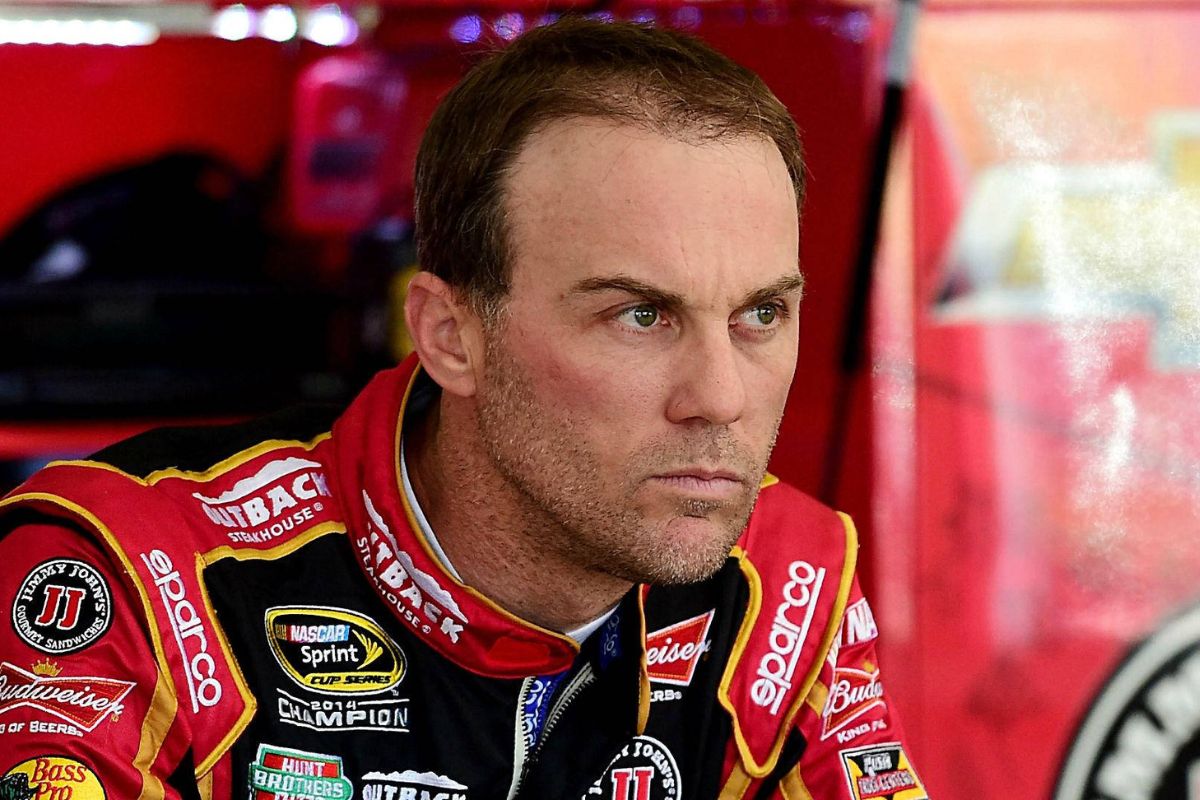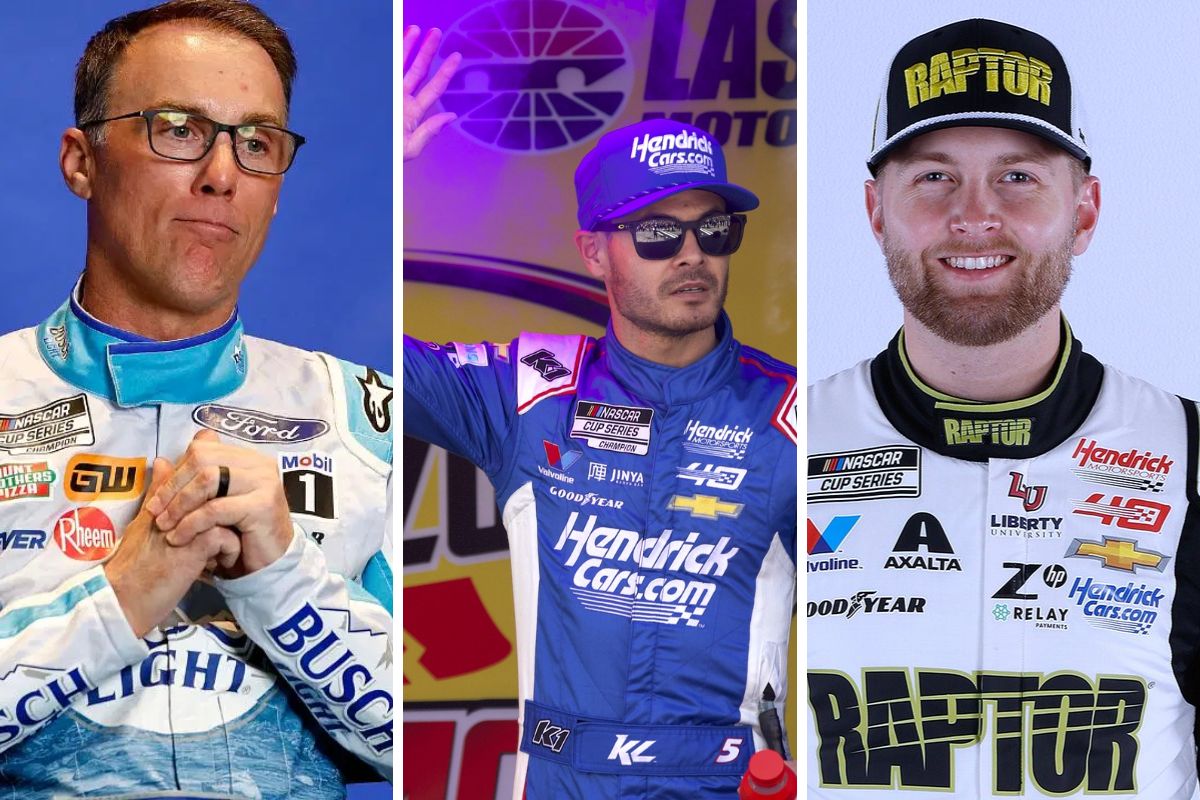Kevin Harvick’s View: Analyzing Larson and Byron in Next Gen NASCAR, Harvick’s view highlights Byron’s 10 wins and poles in 78 races, echoing Larson’s success. Statistically, Byron excels with fewer DNFs and more lead lap finishes, showcasing skill and consistency. Their distinct driving styles set them apart, with Larson’s finesse contrasting Byron’s precision. Endurance-wise, Byron’s tire and fuel management outshine Larson’s struggles with long races. Looking ahead, Byron’s strategic acumen positions him as a top contender, indicating a shift towards young drivers. Harvick’s insights offer valuable perspectives on the dynamic competition between Larson and Byron.
Key Takeaways
- Harvick acknowledges Byron’s potential to lead Hendrick Motorsports.
- Byron’s strategic acumen and consistent ascent make him a top contender.
- Kyle Petty sees Byron’s steady progression and improved results.
- Recent successes highlight Byron’s speed, consistency, and strategic decision-making.
- Byron’s rise signifies a shift towards young drivers in NASCAR’s hierarchy.
William Byron’s Wins and Poles
In examining William Byron’s performance in the Next Gen car, his consistent accumulation of wins and poles positions him as a pivotal contender within Rick Hendrick’s team. Byron’s impressive track record, with 10 wins and an equal number of poles to his teammate Kyle Larson in the 78 races they have competed in together, showcases his championship potential. The ability to secure pole positions reflects not only speed but also a deep understanding of the car’s dynamics and the track layout.
Byron’s success raises an intriguing discussion on the balance between consistency and aggression in racing. While aggressive driving can lead to spectacular moments, consistency in securing wins and poles is often a more reliable path to championship contention. Byron’s track performance demonstrates a keen awareness of when to push for the lead and when to maintain a steady pace to secure a podium finish.
Moreover, Byron’s development as a driver within the team dynamics at Hendrick Motorsports is evident in his ability to translate raw talent into tangible results on the track. The guidance and resources provided by the team have played a vital role in his growth and success. Moving forward, continued driver development will be key in maintaining Byron’s competitive edge and solidifying his position as a top-tier driver in NASCAR.

Statistical Comparison
Given the competitive landscape between Kyle Larson and William Byron, a statistical comparison sheds light on key performance metrics that distinguish the two drivers.
- Performance Analysis: Analyzing their track record regarding wins, top finishes, and laps led provides a detailed view of their competitive edge.
- Consistency Comparison: Examining factors like DNFs and lead lap finishes highlights the drivers’ ability to consistently perform well throughout the season.
- Skill Assessment: Analyzing their driving techniques, adaptability on various track types, and ability to handle pressure can offer insights into their overall skill level.
When looking at the statistical breakdown, Kyle Larson has accumulated 16 DNFs compared to William Byron’s 9, indicating a potential area of improvement for Larson in terms of race completion. Additionally,William Byron lead lap finishes of 63 surpass Larson’s 56, showcasing Byron’s ability to stay competitive throughout races.
These statistics provide a glimpse into the driving habits of both drivers, with Larson potentially needing to focus on finishing races to match William Byron consistency on the track. By considering these statistical insights, one can gain a deeper understanding of the performance disparities between Larson and Byron in NASCAR.
“William Byron has won 10 races, and Kyle Larson has won eight.”
“Seconds, they are close. Top fives, they are close. Top tens, they are close. DNFs – This is where the debate really started for me,” he said. “Kyle Larson has 16 DNFs and William Byron has 9. Lead lap finishes Byron has 63 and Larson has 56.” – (Harvick)
Kyle Larson and William Byron are both having a great season so far. @KevinHarvick looks at some interesting numbers in the Next Gen car for the top two teams at HMS. @KaitlynVincie | @MambaSmith34 | #NASCAR pic.twitter.com/c5YpltRGxe
— HarvickHappyHour (@HarvickHappyPod) March 27, 2024
Differences in Driving Styles
When examining the driving styles of Kyle Larson and William Byron, their approach to racing reveals distinct contrasts in how they navigate the challenges on the track. Larson’s finesse behind the wheel is often highlighted by his ability to push the limits of the car while maintaining control. His natural talent allows him to adapt quickly to changing track conditions, making daring moves that showcase his exceptional skill set. Larson’s aggressive driving style, combined with his finesse, sets him apart on the racetrack.
In contrast, William Byron is known for his precision driving. He meticulously plans his moves, calculating risks to ensure peak performance. Byron’s attention to detail and methodical approach to racing have been key factors in his consistent improvement and success on the track. While Larson relies on instinct and raw ability, William Byron relies on strategic decision-making and precise execution to secure victories.
The differences in driving styles between Larson and Byron are evident in how they handle various race situations. Larson’s finesse allows him to excel in high-pressure moments, showcasing his ability to control the car with finesse, whereas Byron’s precision ensures that every move he makes is calculated and deliberate. These contrasting styles not only define their racing approaches but also contribute to the excitement and unpredictability of NASCAR competitions.
“I think William has been the opposite,” he said. “He has capitalized on some of those situations where a Kyle Larson incident comes in, or something happens and he’s a fifth-placed car. He has a good pitstop or puts himself in a position to win, by keeping himself in the mix. Running all those laps and not having as many DNFs. And so, in NASCAR racing it’s not all about being fast.” – (Harvick)
Endurance and Race Strategy
Larson’s tendency to struggle in finishing long-distance races due to incidents contrasts sharply with William Byron expertise in managing the challenges of endurance and race strategy in NASCAR competitions. While Larson has faced difficulties in maintaining consistency throughout extended races, Byron has showcased a remarkable ability to navigate the complexities of endurance racing. This clear difference in their approaches is evident in various facets of race strategy and management:
- Tire Management: Byron has excelled in preserving his tires over long runs, ensuring that he maintains peak grip and performance throughout the race.
- Fuel Strategy: Byron’s calculated approach to fuel usage has often put him in a pivotal position towards the end of races, allowing him to capitalize on opportunities and secure strong finishes.
- Pit Stops: Byron’s team’s efficiency during pit stops has been a critical factor in his success, enabling him to gain positions and stay competitive in the field.
Moreover, Byron’s consistent race pace and mental toughness have been instrumental in his ability to endure the rigors of NASCAR competitions. His strategic decision-making and resilience under pressure have set him apart as a driver capable of thriving in endurance races, contrasting with Larson’s struggles in this domain.
Predictions and Future Outlook
In evaluating the future trajectory of NASCAR’s competitive landscape, it is evident that William William Byron consistent ascent and strategic acumen position him as a formidable contender for top honors within the sport. The sentiments echoed by Kyle Petty, who highlighted William Byron potential to lead Hendrick Motorsports and secure championships surpassing those of his teammates, shed light on the evolving team dynamics within Rick Hendrick‘s team. Byron’s career trajectory showcases a steady progression marked by improved performance and results, suggesting he is on a path towards becoming one of NASCAR’s potential champions.
As an emerging talent in the NASCAR scene, William Byron ability to adapt to different race scenarios and his knack for making strategic decisions on the track have set him apart. The performance analysis of Byron’s recent races reveals a driver who is not only fast but also consistent, a pivotal combination for sustained success in the competitive sport of NASCAR. His understanding of car setups, tire management, and race strategy has been instrumental in his recent successes, hinting at a promising future in the sport.
With the landscape of NASCAR constantly evolving, William Byron’s rise signifies a shift in the sport’s hierarchy, where young drivers with a combination of skill and strategic prowess are poised to challenge the traditional powerhouses. As William Byron continues to hone his craft and navigate the complexities of NASCAR racing, his potential to emerge as a top driver in the future remains a compelling narrative within the sport.

News in Brief
When comparing the driving abilities of William Byron and Kyle Larson in the next generation of NASCAR, both drivers exhibit impressive skills and potential for success.
While Byron’s consistency and strategic approach stand out, Larson’s aggressive style and natural talent cannot be overlooked.
Ultimately, the choice between these two drivers will likely come down to individual preferences and team dynamics.
It will be interesting to see how their careers unfold in the future.
Our Reader’s Queries
Q: Who does NASCAR driver Kyle Larson drive for?
A: Kyle Larson pilots the No. 5 Hendrick Motorsports Chevrolet in a full-time capacity in the NASCAR Cup Series. His crowning achievement came in 2021, clinching the championship with a triumph at Phoenix Raceway in the title-deciding race.
Q: What does Kevin Harvick drive?
A: Hailing from Bakersfield, California, Kevin Harvick commands the No. 4 Ford Mustang for Stewart-Haas Racing. His illustrious career includes Cup Series championship victories in 2014, as well as Xfinity Series championships in 2001 and 2006, and a Daytona 500 triumph in 2007.
Q: Is Kevin Harvick in the NASCAR Hall of Fame?
A: In tribute to Kevin Harvick’s remarkable career, the NASCAR Hall of Fame unveiled the “Kevin Harvick 4Ever A Champion” exhibit. It showcases the race cars from his five championship victories as a driver or owner, alongside the two title-winning Go Karts.
Also Read: Kevin Harvick Reveals Richard Childress’s Wild Side: Shocking NASCAR Insight


